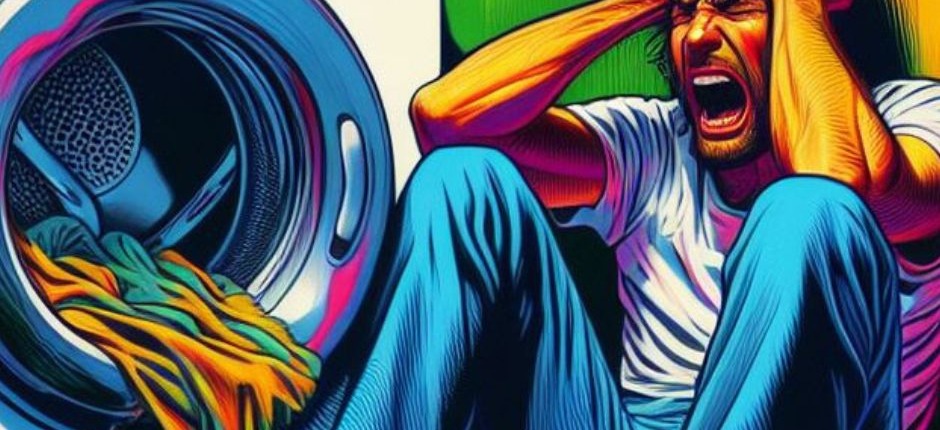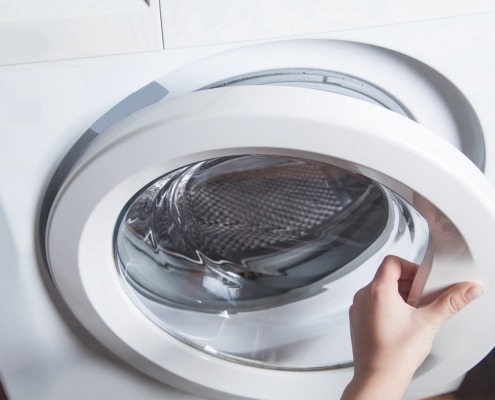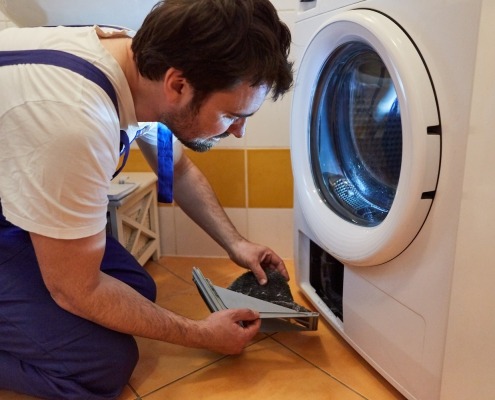7 reasons why your electric dryer won’t turn off
Samantha Bullington / Thursday January 4, 2024
Is your electric dryer throwing your laundry routine for a spin by refusing to turn off? Don’t worry—most fixes for this problem are straightforward and DIY-friendly. Dive into our step-by-step guide below and check out the accompanying how-to video to get your dryer back in line and save on those service call fees.
If your electric dryer won’t stop running at the end of a cycle, don’t let it put a wrinkle in your laundry day. In most cases, this is an easy DIY fix.
Let’s unpack the reasons behind a dryer that refuses to stop running and how you can dodge the cost of a service call by resolving it yourself.
If you need any replacement parts for your dryer, you can enter your model number at AppliancePartsPros.com to order them. Most orders arrive in just two business days.
WATCH: Why your electric dryer will not turn off
Keep safety first
- Always power off and unplug your dryer or switch off the circuit breaker before attempting any maintenance or replacement work. This keeps you safe by preventing any risk of electric shock.
- If the dryer has recently been used, give it plenty of time to cool down before working on it.
- Take your time and don’t rush while working to prevent accidents and personal injuries.
- Work in a well-lit area so you can clearly see and access dryer parts.
- Keep your workspace free of clutter and other obstacles. Keep children and pets away from the work area.
- Never work on internal parts with wet hands. Make sure the work area is completely dry.
- Check the user manual to see if there are specific installation or safety instructions related to your dryer or replacement part.
- Be gentle when handling or removing parts. Excessive force might damage the dryer or cause personal injury.
- Wear insulated work gloves to protect your hands from sharp metal parts and debris.
- When working with wires, avoid touching any exposed wires or terminals. If you need to touch a wire, use a non-conductive tool or wear insulating gloves to prevent electrical shock.
- Consider wearing safety glasses and/or a dust mask when working with chemicals, dust or a large amount of debris to prevent irritation or injury.
Reasons why your dryer won’t shut off
Issues with a handful of parts may prevent an electric dryer from shutting down after the drying cycle. Here’s what you can check to fix a dryer that won’t turn off:
1. Clogged vent and lint buildup
Poor airflow due to clogged vents or a jammed lint filter is the first and easiest thing you need to check. Without good ventilation, the dryer can’t adequately monitor internal temperature and moisture levels. This throws its automatic shut-off function out of whack.
To maximize airflow and prevent your dryer from overheating:
- Clean the lint screen after every load
- Use a dryer lint brush and/or a vacuum cleaner to remove built-up lint from the entire vent hose and external vent hood. You can also get a Linteater kit here.
- Remove any obstructions or kinks from venting
- Use rigid metal (not plastic) venting
- Make sure the vent hose is properly connected to the dryer and exhaust vent hood
WATCH: How To Clean A Dryer Vent – Whirlpool, Maytag, Kenmore, GE, LG, Samsung, and others
Most dryers have a push-to-start button that you press to activate the cycle. The cycle should stop at the end if the button is releasing properly. If this button gets jammed or its internal contacts fuse together, it can continuously send the “on” signal to the control board or motor.
Testing the dryer with the door open should deactivate it:
- You can use a multimeter to check the button switch for continuity.
- If the contacts are permanently closed, replace the start switch.
3. Faulty cycling thermostat
Electric dryers have a cycling thermostat that regulates the interior temperature by cycling the heat on and off. If the thermostat is defective and fails to trip, the element may stay on nonstop. This can cause the high-limit fuse to open and the element to stop heating. Since the heat wouldn’t be working, this would cause the dryer to continuously run in an automatic cycle.
To evaluate the cycling thermostat:
- Remove it and use a multimeter to test it for continuity.
- Use a hairdryer to heat it up and make sure it “opens” once it reaches the specified temperature rating.
If it fails these tests, replace the thermostat.
READ MORE: How to prevent appliance fire hazards
4. Heating element failure
The heating element generates high heat to facilitate evaporation. But if it doesn’t get hot enough, it won’t trigger the high-limit thermostat. This can disrupt the dryer’s ability to monitor temperature and moisture, which can cause it to keep running.
- Visually inspect the element for broken coils or white residues which may indicate failure.
- Use a multimeter to check the element for resistance. Refer to your owner manual to find the acceptable range of resistance for your element.
If the element is damaged or you get faulty resistance readings, replace it.
READ MORE: 9 Ways to Improve Your Dryer’s Performance
5. Defective moisture sensors
Electric dryers use metal moisture sensors that detect conductivity to determine when laundry is dry. If these sensors short out, they may incorrectly perceive that the laundry is still wet.
- Find the sensors on the lint screen housing or inside the dryer drum.
- Carefully clean any debris in between the sensor bars with rubbing alcohol or vinegar.
- Use a multimeter to check the sensors for resistance.
If the sensors are damaged, you don’t get resistance, or if you see an open line reading, replace the sensors.
6. Faulty timer
The mechanical timer controls the dryer’s cycles by activating internal switches and advancing cams. If it malfunctions and fails to advance to the final “off” position, the dryer won’t get the signal to shut down.
To diagnose a defective timer:
- Visually inspect it for broken parts or damage.
- Use a multimeter to check it for continuity.
- Refer to a wiring diagram for your dryer model to interpret timer switch readings.
If the timer is damaged or you get faulty readings on it, replace it.
READ MORE: Tips for Preventing Wrinkles in the Dryer
7. Malfunctioning control board
The electronic control board is the brain of an electric dryer. It processes input from sensors and handles timing. If it’s defective, it can fail to send the “shut off” command at the right time.
- Check the user manual for your model and, if it has troubleshooting steps, follow them to diagnose the control board.
- Check for any error code displays. If you see one, refer to the tech sheet for more information. Further troubleshooting may be needed.
- If all other troubleshooting fails, replace the control board.
READ MORE: 5 Common Mistakes That Shorten The Lifespan Of Appliances
More information
Thank you for reading! We hope this guide helped you get your dryer working correctly again.
If you have any other appliance repair needs or projects, don’t hesitate to explore our other troubleshooting guides and videos.
If you need replacement parts or some extra help with ordering them, grab your model number and head over to AppliancePartsPros.com, where you can chat with a pro, read our DIY blog and more.
Be sure to subscribe to us on YouTube and follow us on Facebook, Twitter and Instagram!
Hey there, I’m Samantha and I’m super excited to be a part of the Appliance Parts Pros team! With 9 years of experience, I’ve had the awesome opportunity to assist countless customers in troubleshooting their home appliances and finding DIY repair solutions.





